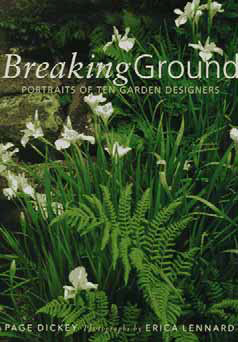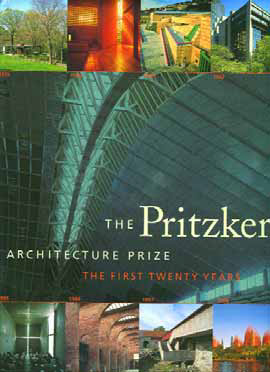inspiration
Santiago Calatrava. Mario Salvadori. James van Sweden. Piet Oudolf. Topher Delany. Frederick Law Olmsted. Frank Lloyd Wright. Andy Goldsworthy. If these names aren't familiar to you already, I'd suggest making an effort to find out who these people are and why I've listed them like this. Some are icons in the history of architecture and design, and certainly all of them have inspired many of us in the landscape trades to reach beyond our boundaries. Personally, these gifted artists have long served as primary sources of inspiration and have always fueled my creativity. Inspiration flows from many sources, of course - maybe from a project you've seen in print or a particularly
For the typical visitor, the newly-reopened Getty Villa is perhaps the most exquisite of all possible venues for viewing ancient works of art and craft - reason enough to plan a visit. For students of architecture and design, however, there's much more, particularly the opportunity to immerse yourself in the living, breathing environment of a classic Roman villa and its abundant amenities. The Getty Villa site encompasses 64 acres of a rugged canyon rising above the Pacific Ocean in Malibu, Calif., and was once home to oil tycoon J. Paul Getty. A fanatical collector of Greco-Roman antiquities, he dedicated part of his original ranch-style home as a public museum in 1954. By 1974, less than a year before his death, he had completed and opened the original Villa on another part of the estate, realizing his ambition of creating a public monument dedicated to the arts. The Villa's layout was inspired by the Villa dei Papiri, a first-century country house in Pompeii buried by the eruption of Mt. Vesuvius in 79 A.D. It was Getty's vision to display his collection in a setting evocative of its contents' historic origins and he realized it, but there were compromises: The spaces were crowded, and the works on display also included samples of paintings and craftworks of much more recent vintage - Renaissance masters, baroque furnishings and other distinctly non-classical artworks. The Villa closed in 1997 at about the same time the
When we first began collaborating on projects with top-flight architects, landscape architects and landscape designers several years ago, for the most part our role in terms of design was fairly limited: We'd receive requests for bids and proposals based on plans of varying detail, and our role was that of faithful installers of the design. On occasions, of course, we'd also refer our own prospective clients to those same designers, who would generate plans that we would in turn estimate and very often install. We still work that way, but as we've built our ties to these accomplished artists, we've become aware that our role in their projects has been growing, even to the point where we are now being asked in many situations to offer our own design ideas. We're also seeing that, when on-site decisions must be made, these designers are
A teacher I respect once told me that there's a fine line between research and plagiarism. He explained that using the ideas of others to construct your own creative expression is perfectly acceptable - desirable, in fact - and a practice that's been part of
It's no exaggeration to say that landscape design, whether residential or commercial, is in something of a rut these days. Nor is it saying anything new. Even in settings separated by great distance - a planned community in Plano, Texas, for example, compared to one in Toms River, N.J. - you'll find almost the exact same hardscape and planting treatments. There's just an incredible homogeneity in design these days. If you find yourself depressed by that predictability (or are stuck in those creative doldrums yourself), I strongly recommend picking up a copy of Breaking Ground: Portraits of Ten Garden Designers (Artisan, a division of Workman Publishing, 1997). Written by Page Dickey, this heavily illustrated 208-page text treats us to insightful and intimate looks at a set of extraordinarily diverse
It's no exaggeration to say that landscape design, whether residential or commercial, is in something of a rut these days. Nor is it saying anything new. Even in settings separated by great distance - a planned community in Plano, Texas, for example, compared to one in Toms River, N.J. - you'll find almost the exact same hardscape and planting treatments. There's just an incredible homogeneity in design these days. If you find yourself depressed by that predictability (or are stuck in those creative doldrums yourself), I strongly recommend picking up a copy of Breaking Ground: Portraits of Ten Garden Designers (Artisan, a division of Workman Publishing, 1997). Written by Page Dickey, this heavily illustrated 208-page text treats us to insightful and intimate looks at a set of extraordinarily diverse
Awards, prizes and accolades can serve as a great way to learn about the top professionals in any given field. As a case in point, I recently picked up a copy of The Pritzker Architecture Prize (Harry Abrams, 1999), a beautifully illustrated 200-plus-page tribute to the first 20 winners of this prestigious annual award, which is given to recognize lifetimes of achievement. Established in 1974 by Pritzker family (founders of the Hyatt chain of hotels), the stated goal of the prize program is to increase awareness of reigning architectural geniuses. Most of the prize recipients are still alive and working, and the list of winners includes some of the most extraordinary designers of the second half of the 20th Century, including Philip Johnson, Luis Barragan, I.M. Pei and Tadao Ando, to name a few. Some I had heard of before, but several were new to me. In all cases, this
We've always based our work as tile artists on refusing to allow existing rules and conventions to get in the way: We push at all boundaries and always seek something more exciting to create. That undaunted spirit of breaking new ground started with my parents, who established Craig Bragdy Design Ltd. in Wales just after World War II. Jean and Rhys "Taffy" Powell met in art school, had four rowdy boys and started the business by producing decorative ceramic products - coffee and tea cups, dishes, salt and pepper sets and a host of other smallish daily items. Even then, they were swimming against the tide: In the postwar United Kingdom, most people were interested in purely practical products and certainly
It's a point I'll probably make to the end of my days: There is no substitute for travel and exploration of the historic world to learn about design. In my "Details" column in the June 2005 issue of WaterShapes, for example, I discussed my recent trip to Turkey and made the point that the ruins and intact structures we examined while there were full of specific details that I and other watershapers use in our work - whether or not we recognize that what we're doing actually derives from ancient original works. Showing what I mean in the clearest possible terms is what this pictorial article is all about. As you will see, I've included
My journey in the company of water began when I was about seven years old, as soon as I was old enough to explore the countryside near my family's farm in Southern England. It was then that I fell in love with water - wading in streams, making dams out of small rocks, sticks and mud and watching the fish darting in clear pools. Much of my summer vacation was spent on a sun-peeled green punt gliding on a lake and staring down to the bottom at the aquatic plants and water creatures. It was a formative experience. My parents loved the water, too, and they always had some type of boat. I'll never forget how almost every one of those modest vessels leaked profusely. This gave all of us first-hand experience of enjoying the water as we developed a visceral appreciation of the importance of






















